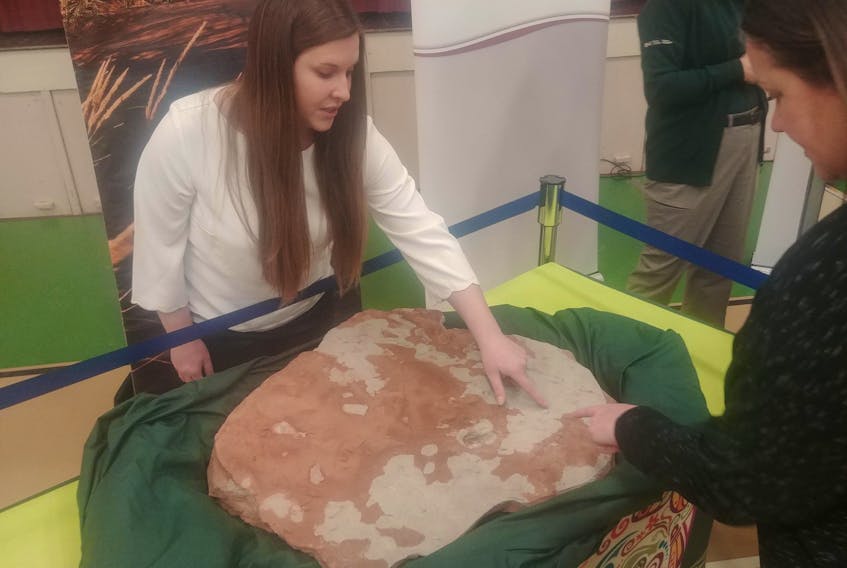Laura MacNeil was looking for fossils along the north shore of P.E.I. last summer.
Near Cavendish, she noticed a large rock with a series of grooves impressed into it. They looked very different from other Island rock patterns.
She felt it with her hand.
“It looks just like a footprint,” she thought.
She was skeptical, so she studied it for about half an hour. She tried to convince herself it wasn’t a fossil.
“But I couldn’t. It looked too much like this was something very scientifically important.”
After a while, she ran back to her car to email the provincial government and Parks Canada to report what she believed was a dimetrodon’s footprint.
“And the rest is history.”
MacNeil revealed her discovery at Sherwood Elementary School on Feb. 21. Premier Wade MacLauchlan spoke at the event, and many Sherwood students were among the first to see the fossil.
It’s since been confirmed the footprint is from the dimetrodon family.
Dimetrodons were lizard-type creatures ranging from six to 15 feet long. They had a tall fin along their spines and walked on this prehistoric Island during the early Permian Period.
That’s before the time of dinosaurs. The fossil is about 290 million years old, MacNeil said.
A big indication it’s a dimetrodon fossil is the footprint’s toes. They’re pointed at the end, suggesting the creature had claws, MacNeil said.
“Which usually means it was a predator, a meat-eater, a carnivore.”
MacNeil, a science educator at the Royal Tyrrell Museum of Palaeontology in Alberta, said her experience at the museum made her curious about what she may find back home.
“It made me wonder what kind of fossils were on P.E.I.” she said. “I was pretty excited about finding something significant.”
This discovery is important because it’ll help paleontologists better understand how dimetrodons lived. A skeleton fossil can only show what happened to the creature after it died, MacNeil said.
“These footprints are representative of a living creature and can tell us quite a bit about how they moved and behaved.”
This isn’t the first dimetrodon fossil found on P.E.I. In 2015, researchers published a paper suggesting they’re still learning about an Island fossil discovered in 1845.
When addressing the elementary students, MacLauchlan compared fossils to pictures. Finding a fossil is like seeing a picture you’ve never seen before, he said.
“We have a few pictures today of what was going on in Prince Edward Island 300 million years ago.”









